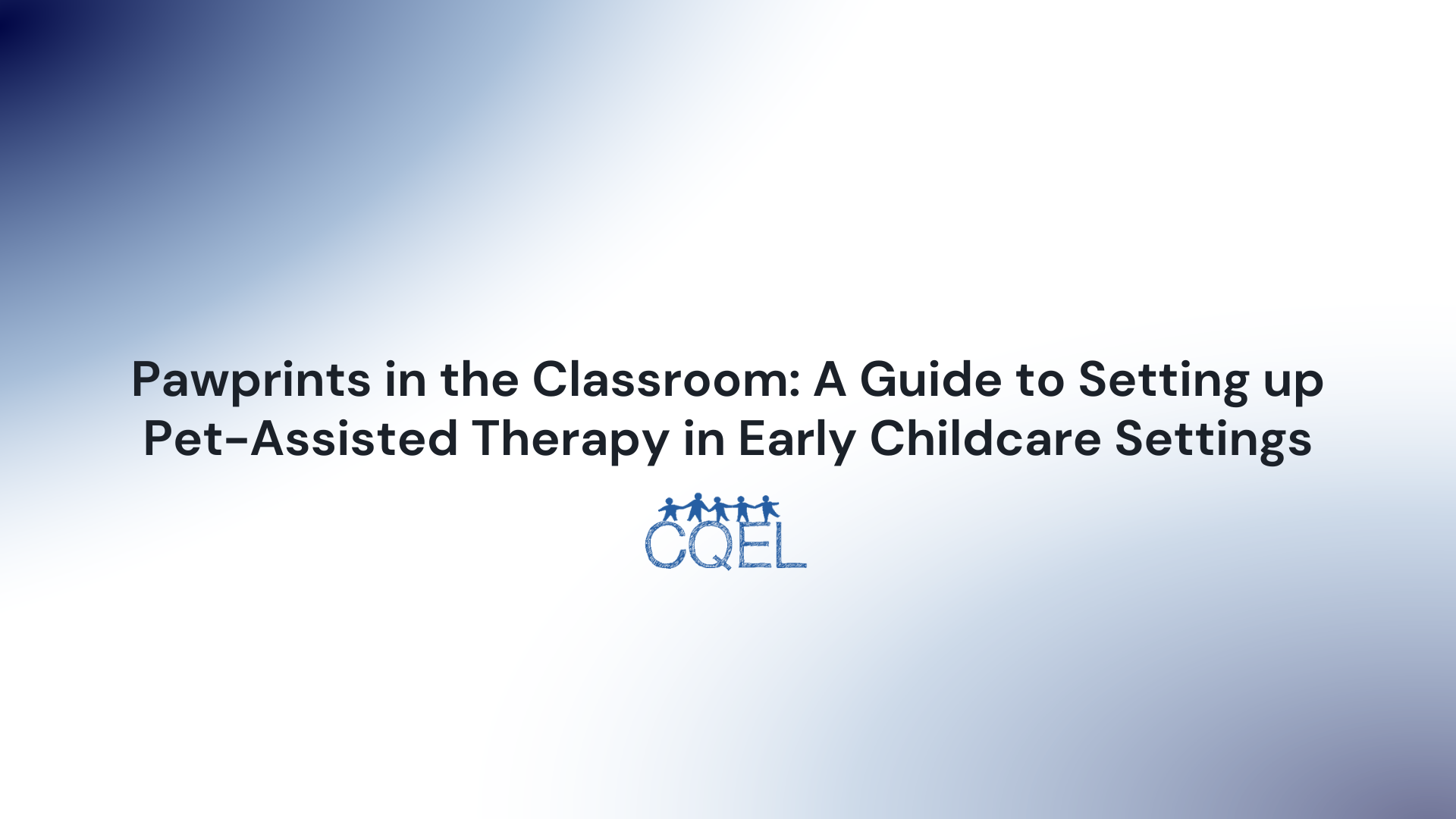Pawprints in the Classroom: A Guide to Setting up Pet-Assisted Therapy in Early Childcare Settings
How do you integrate this unique form of therapy in your childcare setting? Here is a detailed step-by-step guide to setting up pet-assisted therapy in early childcare settings.

The magic of a therapy animal's touch can bring innumerable benefits to young learners, from fostering emotional growth to promoting social and cognitive skills. But how do you integrate this unique form of therapy in your childcare setting? Here is a detailed step-by-step guide to setting up pet-assisted therapy in early childcare settings.
1. Understand the Role and Benefits of Pet-Assisted Therapy
Before anything else, it's important to fully grasp what pet-assisted therapy (PAT) is and the benefits it brings. PAT involves the use of specially trained animals to provide therapeutic benefits to individuals. These benefits can range from boosting self-esteem and promoting emotional wellbeing to enhancing social skills and cognitive development. Check out resources like the American Humane Association to delve deeper into PAT.
2. Gauge Interest and Assess Feasibility
Before implementing PAT, you must assess the interest of all stakeholders - parents, staff, and children. Discuss the idea with them, addressing any concerns or questions they may have. Also, consider practical issues like allergies, fear of animals, and space constraints. Keep in mind that the ultimate goal is to create a safe and beneficial environment for the children.
3. Choose the Right Animal and Service
Different animals offer different benefits and experiences. Dogs and cats are often popular choices for PAT because they are friendly and social, but other animals like rabbits or guinea pigs can also be used. It's crucial to work with registered organizations like Pet Partners or Therapy Dogs International to ensure the therapy animals are trained and suited for the task.
4. Prepare Your Environment
The classroom environment needs to be safe and comfortable for the animal as well as the children. Designate a specific area for the animal, ensuring it is clean and secure. Educate children about interacting with animals - gentle touching, respecting the animal's space, and hygiene practices like hand washing before and after interaction.
5. Integrate the Therapy into Your Curriculum
Once the pet therapy is set up, it's time to integrate it into your curriculum. This could be through structured activities like reading to the animal, or through free play. Monitor these interactions closely to ensure both the children and the animals are comfortable.
6. Evaluate and Adapt
Finally, remember that PAT is not a one-size-fits-all solution. Regularly evaluate the impact of the therapy on children and adapt as necessary. You might need to adjust the frequency of visits, change the animal, or modify the activities.
Setting up pet-assisted therapy in your early childcare setting may require time and resources, but the benefits it brings to children’s development make it a worthwhile investment. With careful planning, coordination, and ongoing evaluation, PAT can become an integral part of your childcare program, offering unique learning experiences for the children in your care.
